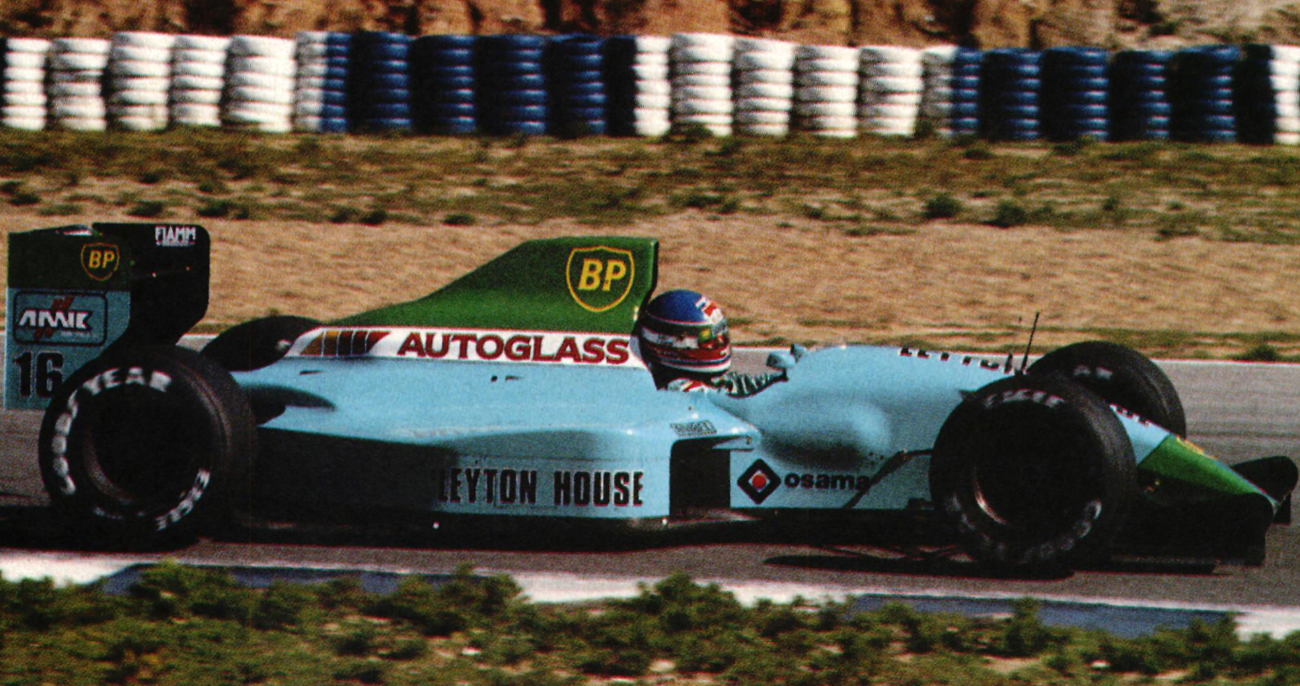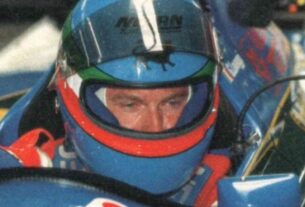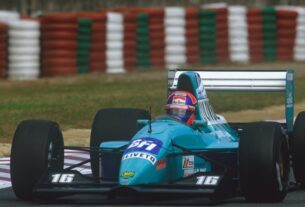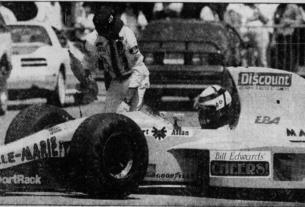March Racing Team underwent a name change during the winter of 1989/1990. Leyton House was the teams’ title sponsor for a couple of seasons and from 1990 onwards, it became Leyton House Racing. The car kept its Miami Blue colour scheme while Adrian Newey was working on their new challenger the CG901. However, the CG901 would not appear on the grid before Imola, as it was more or less a completely new car. For the start of the season, Leyton House Racing would appear with the CG901A on the track! The first time the CG901A was shown was during the test session at Jerez in February 1990. They arrived with a brand-new technology to the circuit.
The interesting part is that the CG901A was an evolvement of the March CG891 from 1989. If you look good at the photos, you will see the similarities in the chassis and the shapes. What was changed were the necessarily modifications to meet the new 1990 regulations for the cars. The cockpit and chassis dimensions were larger as was the front bulkhead. Internally some changes were made as well. The roll bar was mad out of composite. The biggest cosmetic change was a brand new front wing.
It is this front wing that makes the story of the CG901A even better. When Leyton House Racing arrived at Jerez with Capelli behind the wheel. They brought also new measuring technology with them. With the help of white dots (as a measure point) on the front wing and rear wing, an infrared camera was able to measure several things that happened on the car.
It is not sure if there was just one camera or several cameras. What is known is that the camera was used at Jerez at several corners. Thanks to the white dots, the camera was able to register changes of the attitude and gave the team sharp footage of how the car behaved in the corners. The camera, thanks to it’s infrared, was also able to measure for example the tyre temperatures
Several cameras were placed around the track and especially in some corners (sadly unknown which corners). The camera was able to film with 200 frames per second. Which gave the team the opportunity somewhat of an advancement. The feedback could eventually be used to improve the CG901A. Unique at that time.
If the team did use the system in further testing is unknown from this point on. The CG901A and later the CG901 had some issues with its reliability. They only mastered the problems at the point when Adrian Newey was leaving the team for Williams where he would eventually design the winning FW14. This FW14 was what the Leyton House CG911 would have been!





